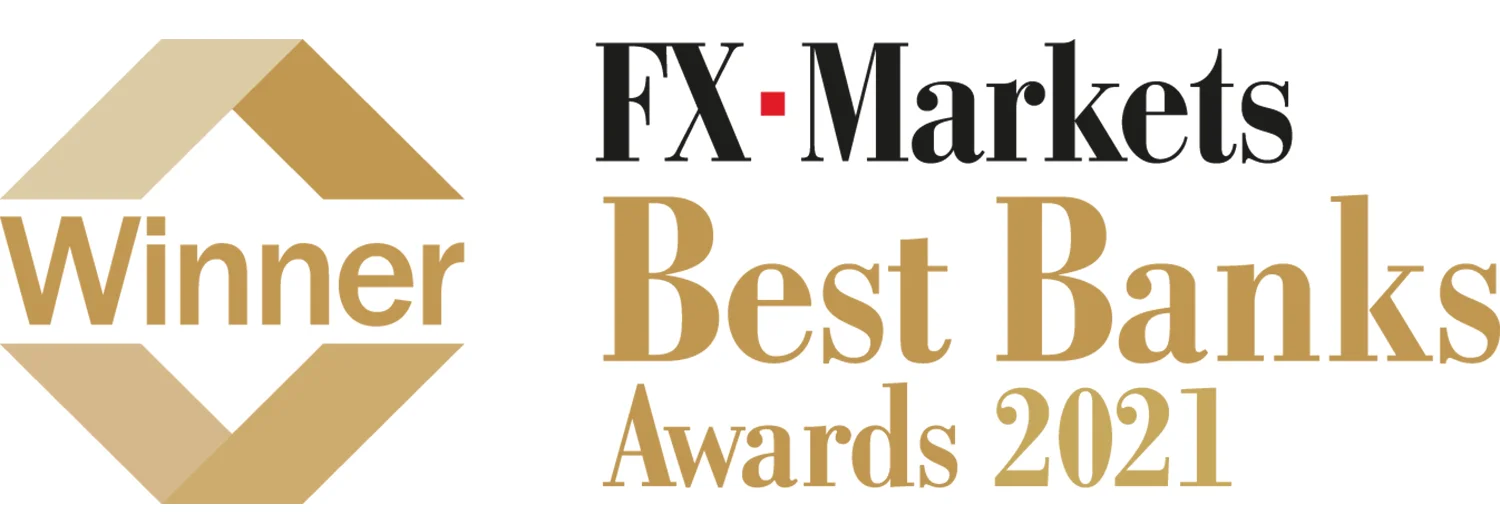
Banco Santander recognised in two categories at the 2021 FX Markets Best Banks Awards

With a return to normality in Latin American FX markets in 2021, Banco Santander is optimistic about the prospects of FX in the region, and particularly in Brazil where the bank is seeing a greater take-up of electronic means of trading

In 2021, Latin American currencies largely recovered from the devastating consequences of the Covid-19 pandemic. Despite a general weakening across most currencies in the region for the majority of the year, LatAm FX markets on the whole did not suffer the sort of disruptions experienced in 2020. This return to normality was, in large part, due to the actions of central banks and national treasuries, which infused stability and liquidity in the markets, thus enabling market participants to operate under more regular conditions.
“In the end, markets managed to find levels where all participants could carry out their transactions, which is a great achievement for a region that has had its issues in the past,” explains Rafal Foltynowicz, global head of FX at Santander Corporate and Investment Banking. “Santander supported its clients’ needs during these challenges, and 2021 stood out as one of the best performances we have ever had on the sales and trading of FX products and services.”
These stellar results are a direct consequence of the optimism that began to pervade LatAm markets in the early part of 2021 as Covid concerns dissipated on the back of strong vaccination rates in the region. Later in the year, the emerging inflation worries and the subsequent monetary policy response spurred market activity further.

While none of the currencies in the region returned to their pre-pandemic levels, Mexico outperformed its peers, thanks in large part to the greatly improved fiscal position of the country and a record year in incoming remittances. The Mexican peso remained highly stable throughout 2021 with USD/MXN closing the year at 20.82, only 1.2% off from the January open.
The road for the Brazilian real was not as smooth, however. The currency of the largest economy in LatAm continued to be subject to the same bouts of volatility in 2021 as it did in 2020 as concerns around high Covid-19 infection rates and their consequences on the country’s fiscal position continued to linger. With more than 25 million reported Covid cases in the country, Brazil has the third-highest infection rate and the second-highest death toll in the world.
Throughout much of the year, the active intervention to defend the real in FX markets by the Banco Central do Brasil (BCB) – the country’s central bank – dampened the worst effects of volatility by injecting liquidity into the market when conditions were most stressed. The real was further boosted as the BCB embarked on an aggressive interest rate-hiking cycle as inflation began to pick up. Consequently, the bank raised rates a total of seven times in 2021, bringing interest rates from the low level of 2% at the beginning of the year all the way up to 9.25% in December.
Interest rate hikes and volatility pressures
But, despite the boost from central bank intervention in 2021, USD/BRL did not regain the 40% it lost in value during the earlier stages of the pandemic. Sustained support in the markets at the end of the year did, however, propel the real to appreciate against the dollar slightly, ending the year at 5.36 – 1.8% higher than at the start of the year.
“Last year was quite a challenging year for trading USD/BRL,” says Luiz Masagao, head of markets in Santander Corporate and Investment Banking Brazil. “The high level of volatility that started in 2020 with the Covid crisis remained in 2021. Fiscal challenges and political campaigns strongly influenced moves in the currency, but active central bank intervention to defend the currency and rate hikes were positive factors for BRL.”
Santander’s continued support to its clients in LatAm FX markets in 2021 led market participants to vote Santander Best bank for Latin America and USD/BRL at the 2021 FX Markets Best Banks Awards.
Foltynowicz explains that 2022 may also be a challenging year for FX markets in Latin America. He points out that the stable liquidity conditions that were a staple of 2021 may begin drying up in 2022 if the Federal Reserve starts hiking interest rates in the US – as many in the market expect – in addition to the removal of monetary stimulus.
But, there are upsides weighing in favour for LatAm currencies. They have the advantage of being relatively cheap from a historical perspective and, since central banks in the region have already embarked on their own rate-hiking path, their currencies are more insulated from the shocks coming out of the US. The current rising prices of commodities are also a plus for LatAm currencies, as is the sustained recovery of the region’s economies.
While the conflict between Russia and Ukraine could wobble the region’s markets, more localised issues such as the Brazilian presidential election in October 2022 or the possibility of the Chilean peso and the Brazilian real becoming fully convertible during the course of the year could put some pressure on volatility.
A more liberalised and electronic Brazilian FX landscape ahead
While it remains to be seen when the full convertibility of the real will come to pass, the BCB remains committed to simplifying and modernising FX and capital regulation in Brazil, which plays well with the increasing electronification of the Brazilian FX market and the region as a whole.
Brazil still lags the rates of e-trading in Mexico, but remains more advanced than many of its neighbours. The increasing market share of e-FX trading platforms – proprietary and multibank – has had positive effects on price transparency without negatively affecting liquidity.
“We are seeing banks investing in electronic trading in the region to capture a bigger market share of the local FX market,” points out Foltynowicz, an observation Masagao supports, who adds: “We see more demand from corporates and institutional clients for FX electronic solutions. Santander is on track with this trend and continues to invest in this area. The challenge here is to build a setup which is safe, as liquidity can sometimes be a much greater issue in Latin American FX when compared to Group of 10 currencies.”
Indeed, recurring high levels of volatility over the past few years have led to fewer inflows from foreign investors into the country – especially real money accounts – but Foltynowicz is nonetheless optimistic about Brazilian FX in general.
“Volatility and sometimes liquidity can be an issue, but Brazil still has a very solid FX market with more than $40 billion traded per day on the exchange,” points out Masagao.
Foltynowicz concludes that “the country has a decent amount of FX reserves and a central bank active in FX markets. Brazil has always been a very important FX hub for Santander in Latin America and, as such, we constantly invest in upscaling our capabilities and exploring market trends to allow us to provide liquidity to our whole franchise, including local and offshore institutions as well as large local corporates.”
Sponsored content
Copyright Infopro Digital Limited. All rights reserved.
You may share this content using our article tools. Printing this content is for the sole use of the Authorised User (named subscriber), as outlined in our terms and conditions - https://www.infopro-insight.com/terms-conditions/insight-subscriptions/
If you would like to purchase additional rights please email info@fx-markets.com
Copyright Infopro Digital Limited. All rights reserved.
You may share this content using our article tools. Copying this content is for the sole use of the Authorised User (named subscriber), as outlined in our terms and conditions - https://www.infopro-insight.com/terms-conditions/insight-subscriptions/
If you would like to purchase additional rights please email info@fx-markets.com